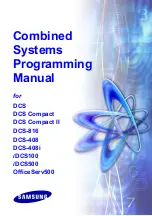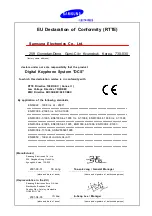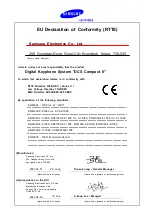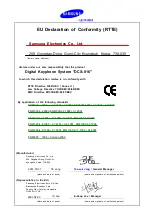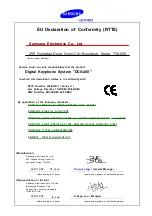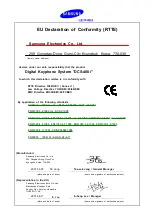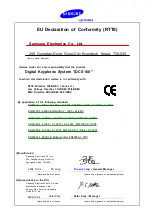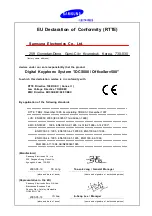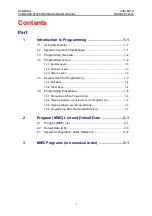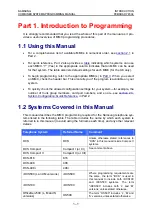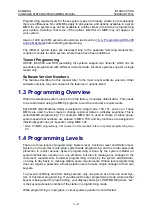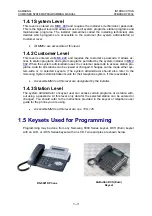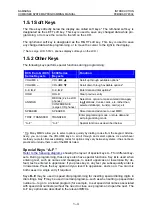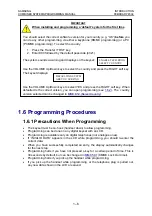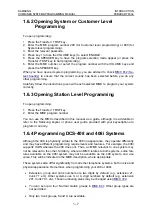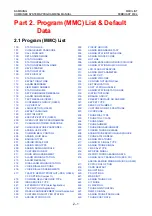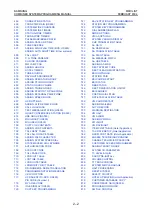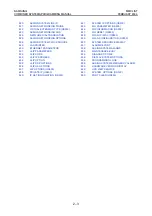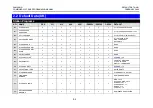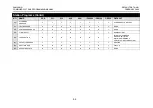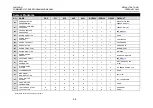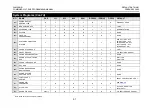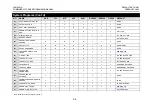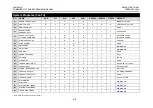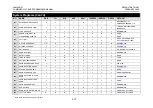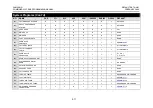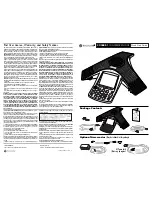
SAMSUNG
INTRODUCTION
COMBINED SYSTEMS PROGRAMMING MANUAL
FEBRUARY 2004
1–4
1.5.1 Soft Keys
The three keys directly below the display are called soft keys.* The left-hand soft key is
designated as the LEFT soft key. This key is used to save any changed data while pro-
gramming, or to move the cursor to the left on the LCD.
The right-hand soft key is designated as the RIGHT soft key. This key is used to save
any changed data while programming, or to move the cursor to the right in the display.
(* Note: Large LCD, 5012L, phones display soft keys on the LCD.)
1.5.2 Other Keys
The following keys perform special functions during programming:
DCS Euro &
i
DCS
Series Keysets
5000 Series
Keysets
Function
VOLUME
+
VOLUME
V
Scroll up through available options*
VOLUME
–
VOLUME
W
Scroll down through available options*
0–9,
4
, #
0–9,
4
, #
Enter data and dial options*
HOLD
HOLD
Clear previous entry
REDIAL (2-Line LCD
phones)
ANS/RLS
CONFERENCE
(Large LCD phones)
Select ALL option to make entered data apply
to
all
stations, trunks, cards, etc. rather than
selected station(s), trunk(s), card(s), etc.
SPEAKER
SPEAKER
Store data and advance to next MMC
TRSF / TRANSFER TRANSFER
Enter programming mode, or store data and
exit programming mode
“A–F”
“A–F”
Special functions as described below.
* Tip: Many MMCs allow you to select options quickly by dialling codes from the keypad. Alterna-
tively, you can press the VOLUME keys to scroll through and select options. Use whichever
method you prefer. Because dialling codes for options may vary between systems, it has not been
practical to include them in all of the MMCs listed.
Special Keys “A–F”
Refer to the following diagrams
showing the layout of special keys A–F for different key-
sets. During programming, these keys also have special functions. Key
A
is used when
entering text, such as names and messages, to select uppercase or lowercase. By de-
fault, text is entered in uppercase; if you press key A, any text you subsequently enter is
in lowercase. Press the key again and you revert to uppercase, and so on. You can mix
both cases in a single entry if required.
Keys
B–E
may be used in
speed dial programming
for inserting special dialling digits in
dial strings.
Key
F
may be used in certain programs—such as when setting up speed dial
numbers—to go to a related program (for example, to set speed dial names associated
with speed dial numbers) without the need to close one program and open the next. The
A–F key options are described in the relevant MMCs.

